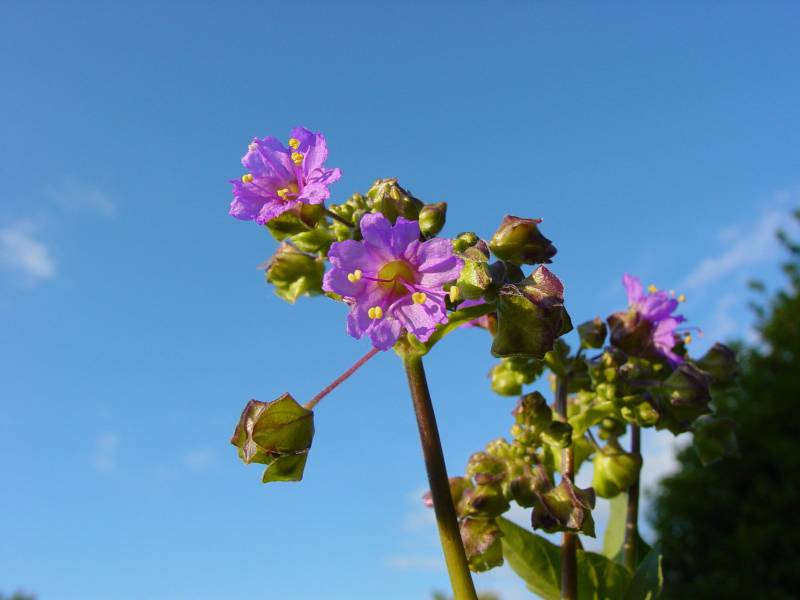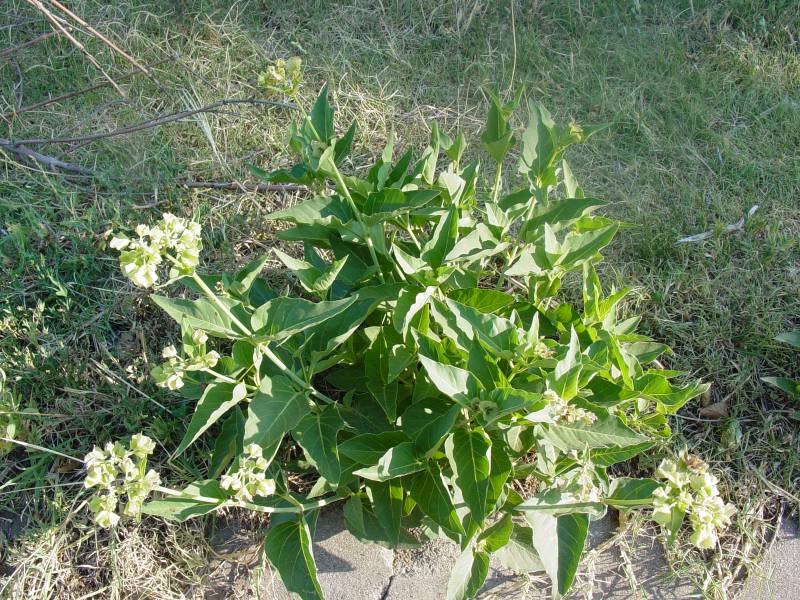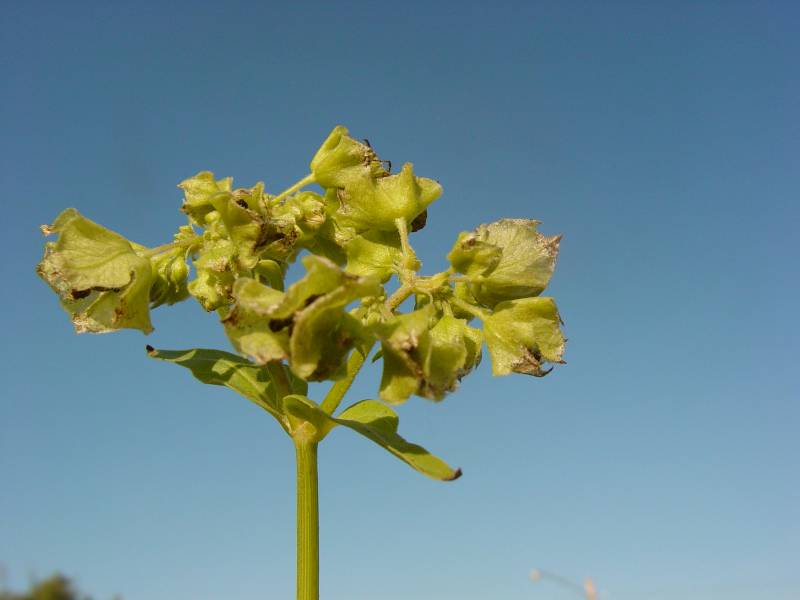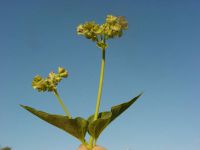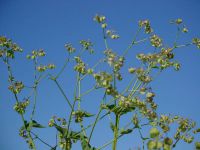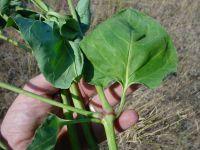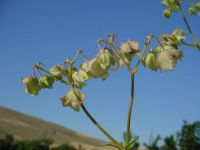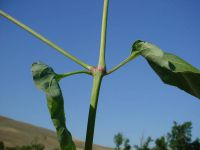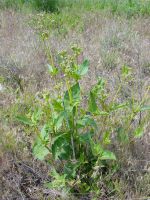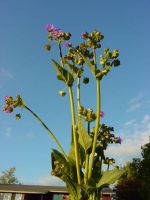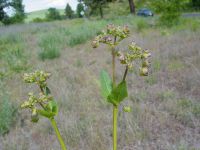Distribution: Occurring east of the Cascades crest in Washington; British Columbia to Washington, east to Motana; native to central and eastern North America.
Habitat: Disturbed areas of dry valleys and plains.
Flowers: June-August
Origin: Introduced from east of the Rocky Mountains
Growth Duration: Perennial
Conservation Status: Not of concern
Pollination: Bees, moths, self-pollination
Herbaceous perennial from a fleshy root, erect or ascending, glabrous below and puberulent above, branching mostly above.
Leaves opposite, the lower ones broadly deltoid or deltoid-ovate, rounded at the base and pointed at the tip, narrowed abruptly to petioles 5-20 mm. long, glabrous except for the marginal hairs, gradually reduced upward.
Inflorescence usually a congested cyme on a peduncle; flowers usually 3 in a broadly bell-shaped involucre, which is 5-7 mm. long with broadly obtuse or rounded lobes; perianth with 5 flaring lobes, 1 cm. long, glabrous, pink or white; corolla none; stamens 3-5, exerted; style 1.
Achene obovoid, 5 mm. long, wrinkled, strongly 5-ribbed.
Publication: Metasp. Minnesota Valley. 217. (as nyctagineus). 1892.
Oxybaphus nyctagineus (Michx.) Sweet
PNW Herbaria: Specimen records of Mirabilis nyctaginea in the Consortium of Pacific Northwest Herbaria database
WA Flora Checklist: Mirabilis nyctaginea checklist entry
OregonFlora: Mirabilis nyctaginea information
E-Flora BC: Mirabilis nyctaginea atlas page
CalPhotos: Mirabilis nyctaginea photos

